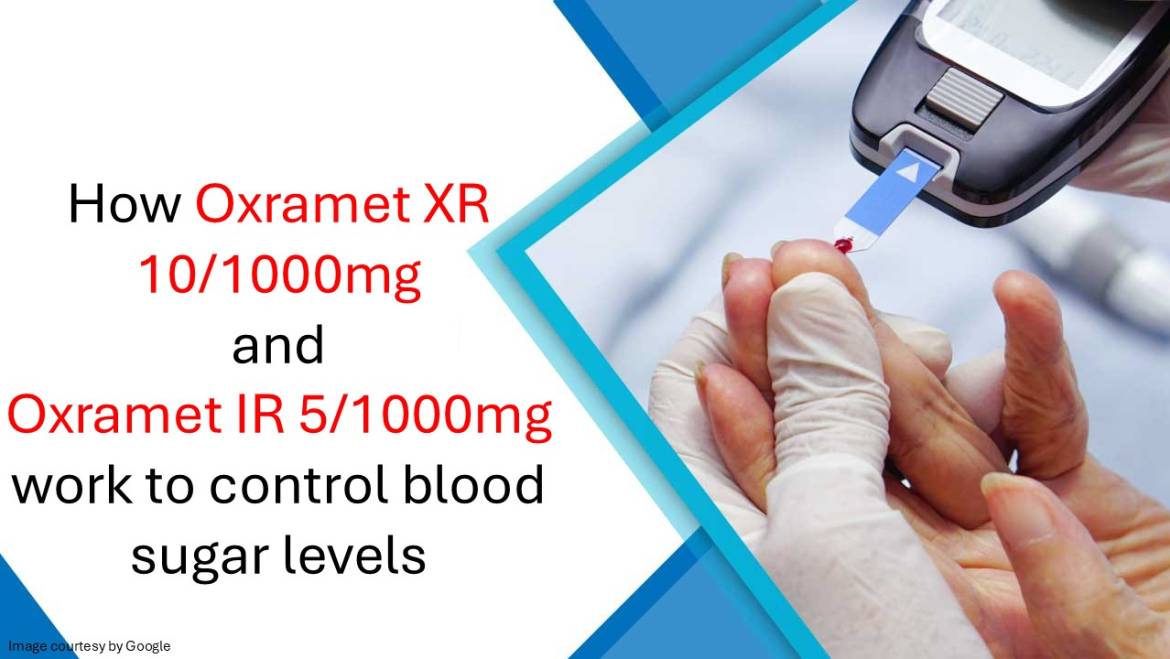In today’s world of Gen Z, life is very fast and hectic. We find very little or no time for ourselves, which is one of the leading causes of various health complications. A large part of the population in today’s time is dealing with diseases such as diabetes, high blood pressure, immunity, asthma, etc.
Blood sugar level, also known as blood glucose level, refers to the concentration of glucose (a type of sugar) in the blood. Glucose is a primary energy source for the body’s cells, and it comes from the food we eat, especially carbohydrates. After eating, carbohydrates are broken down into glucose, which enters the bloodstream and is used by cells for energy, stored as glycogen, or converted to fat.
Why blood sugar levels matter:
-
- Energy source: Glucose is crucial for the body’s normal functioning. It’s particularly important for brain function, as the brain relies almost entirely on glucose for energy.
- Regulation by insulin: The hormone insulin, produced by the pancreas, helps regulate blood sugar levels by facilitating glucose uptake into cells. When blood sugar levels are high (after eating), insulin helps lower them by promoting glucose storage in the liver and muscles. When blood sugar levels are low, the liver releases stored glucose to maintain a steady level.
Normal blood sugar levels:
Blood sugar levels vary throughout the day, typically rising after meals and falling during fasting periods. Here are typical ranges:
-
- Fasting blood sugar (before a meal):
- Normal: 70-99 mg/dL (3.9-5.5 mmol/L)
- Prediabetes: 100-125 mg/dL (5.6-6.9 mmol/L)
- Diabetes: 126 mg/dL (7.0 mmol/L) or higher on two separate tests
- Postprandial blood sugar (1-2 hours after eating):
- Normal: Less than 140 mg/dL (7.8 mmol/L)
- Prediabetes: 140-199 mg/dL (7.8-11.0 mmol/L)
- Diabetes: 200 mg/dL (11.1 mmol/L) or higher
- Fasting blood sugar (before a meal):
Managing blood sugar levels:
-
-
For individuals with conditions like diabetes, managing blood sugar levels is essential. This typically involves a combination of medication (such as insulin or oral hypoglycemic agents), dietary management, physical activity, and regular monitoring of blood sugar levels.
-
Maintaining balanced blood sugar levels is key to overall health and well-being.
-
What is Oxramet
Oxramet XR 10/1000 mg and Oxramet IR 5/1000 mg are combination medications used to manage blood sugar levels in people with type 2 diabetes. They contain two active ingredients: dapagliflozin and metformin. Despite containing the same active ingredients, these two formulations work slightly differently due to their extended-release (XR) release mechanisms for Oxramet XR and immediate-release (IR) for Oxramet IR.
-
- Dapagliflozin:
Mechanism of action: Dapagliflozin is a sodium-glucose cotransporter-2 (SGLT2) inhibitor. SGLT2 is responsible for reabsorbing glucose from the urine back into the bloodstream in the kidneys. By inhibiting this transporter, dapagliflozin reduces the amount of glucose reabsorbed, leading to increased glucose excretion in the urine. This helps lower blood glucose levels.
-
- Metformin:
Mechanism of action: Metformin decreases glucose production, intestinal glucose absorption, and improves insulin sensitivity by increasing peripheral glucose uptake and utilization. This reduces overall blood glucose levels and improves the body’s response to insulin.
What is Xigduo?
Dapagliflozin and metformin come under the brand Xigduo IR and Xigduo XR, among others. AstraZeneca AB is a Xigduo XR manufacturer. Xigduo IR generic Oxramet IR works the same way as the brand medicine.
Working of Oxramet XR 10/1000 mg:
-
- XR (extended-release): The extended-release formulation of Oxramet ensures a slow and steady release of the medication over time. The dapagliflozin and metformin are released gradually, which helps maintain a consistent level of the medication in the bloodstream. This reduces the frequency of dosing and minimizes gastrointestinal side effects associated with metformin.
Working of Oxramet IR 5/1000mg:
-
- IR (immediate-release): The immediate-release formulation releases the active ingredients quickly after ingestion. This allows for a faster onset of action. However, the effects may not last as long as the XR formulation, often requiring more frequent dosing. Immediate-release formulations can also be associated with a higher risk of gastrointestinal side effects than extended-release versions.
To save more, compare the Xigduo XR price with Oxramet XR 10/1000mg.
Your doctor will decide the right dosage and treatment duration with Oxramet/Xigduo XR 10mg/1000mg OR Xigduo IR 5/100
While effective in controlling blood sugar levels, it is important to be aware of the precautions and potential side effects associated with its use.
Precautions while taking Oxramet OR Xigduo XR 10mg 1000mg OR Oxramet/Xigduo IR 5 1000
1. Kidney function:
Monitor renal function: Metformin and dapagliflozin can affect kidney function, especially in people with pre-existing kidney issues. Regular monitoring of kidney function (e.g., eGFR levels) is necessary.
Avoid severe renal impairment: This medication is generally contraindicated in patients with severe renal impairment (eGFR below a certain threshold), as it can increase the risk of lactic acidosis (from metformin) and other complications.
2. Liver function:
The liver metabolizes metformin, and impaired liver function can increase the risk of lactic acidosis. Regular liver function tests are recommended.
3. Risk of lactic acidosis:
Although it is rare, lactic acidosis is a serious condition that can occur due to metformin accumulation, especially in situations of renal impairment, dehydration, or excessive alcohol consumption. Symptoms include muscle pain, difficulty breathing, abdominal discomfort, dizziness, and fatigue.
4. Cardiovascular considerations:
Dapagliflozin can cause diuresis (increased urine production), which may lead to dehydration, hypotension (low blood pressure), and dizziness, particularly in patients taking diuretics or with a history of cardiovascular disease.
5. Pregnancy and breastfeeding:
Oxramet/Xigduo should generally be avoided during pregnancy and breastfeeding unless specifically prescribed by a healthcare provider, as there may be risks to the developing fetus or nursing infant.
Side effects with Oxramet OR Xigduo
Common side effects:
-
-
Gastrointestinal issues: Nausea, vomiting, diarrhea, and abdominal discomfort are common, particularly due to metformin. These symptoms are often more pronounced at the start of treatment and may decrease over time.
-
Urinary tract infections (UTIs): Dapagliflozin can increase the risk of UTIs, which may manifest as a burning sensation during urination, increased frequency, or cloudy urine.
-
Genital infections: Yeast infections of the genital area are more common, particularly in women.
-
Serious side effects:
-
-
Lactic Acidosis: Although rare, this serious side effect requires immediate medical attention. Symptoms may include muscle pain, shortness of breath, and extreme tiredness.
-
Hypoglycemia: While Oxramet alone is less likely to cause low blood sugar, using it with other diabetes medications like insulin or sulfonylureas increases the risk of hypoglycemia. Symptoms can include shakiness, sweating, confusion, and dizziness.
-
Dehydration and Electrolyte Imbalance: Due to the diuretic effect of dapagliflozin, there is a risk of dehydration, which can lead to dizziness, weakness, and electrolyte imbalances.
-
Allergic reactions:
Signs of Allergy: Although rare, severe allergic reactions can occur. Symptoms might include rash, itching, swelling (especially of the face/tongue/throat), severe dizziness, and difficulty breathing.
Summary
Oxramet is an effective medication for managing type 2 diabetes but requires careful monitoring and adherence to precautions to minimize risks. Your doctor must have seen greater benefits over side effects while prescribing this medicine. Regular follow-ups with your healthcare provider, adherence to prescribed doses, and prompt reporting of unusual symptoms are essential to get the most from this medicine.
The choice between XR and IR formulations typically depends on individual patient needs, including how well they tolerate metformin, their dosing preferences, and their overall treatment goals.
admin
Latest posts by admin (see all)
- What is Triluma Cream? Uses, Benefits, and How It Works for Skin - December 26, 2024
- What Causes Dark Spots? Understanding the Science of Hyperpigmentation and How Skin Lightening Products Help - December 26, 2024
- Tretinoin Gel vs. Cream: Which Formulation is Right for Your Skin? - December 20, 2024



